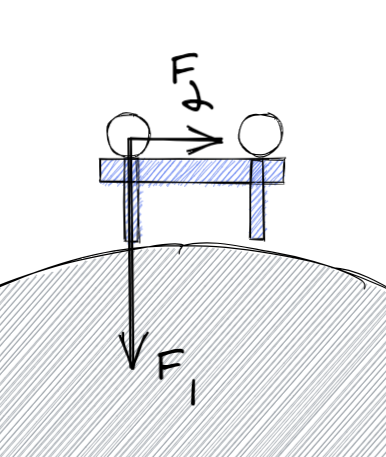MOND is controlled by
$\mu=\mu(\frac{a}{a_0})$
and
$\mu\rightarrow1$ when $a\rightarrow0$
But on my table $a=0$ so shouldn't I see MOND by just placing some weight on my weighter?
If it is wrong statement, then what do I need in my hypotherical lab to see MOND in table experiments?
The gravitational acceleration of a mass of one kilogram, induced on a probe mass at a distance of 1 meter is G, which is $10^{-11}$, i.e. much less than acceleration from a Galaxy, induced on a Sun, which is suffering from MOND.
I.e. MOND should be directly visible by measuring of attraction of two kilograms at 1 meter from each other.
Isn't it?
Regard two bodies of 1 kg, laying on table.
I agree, that the force $F_1$ is due to big gravity from Earth and hence MOND effects should be negligible. This force should be indistinguisheable from conventional gravity. But force $F_2$, induced by attraction of second body is very small. It is smaller, than attraction of a Sun from the Galaxy. Since Sun is the subject of MOND, then $F_2$ should also be MOND-affected. Once we measure it, we should immediately see, if MOND is correct or not.
Is there any error in this reasoning?

